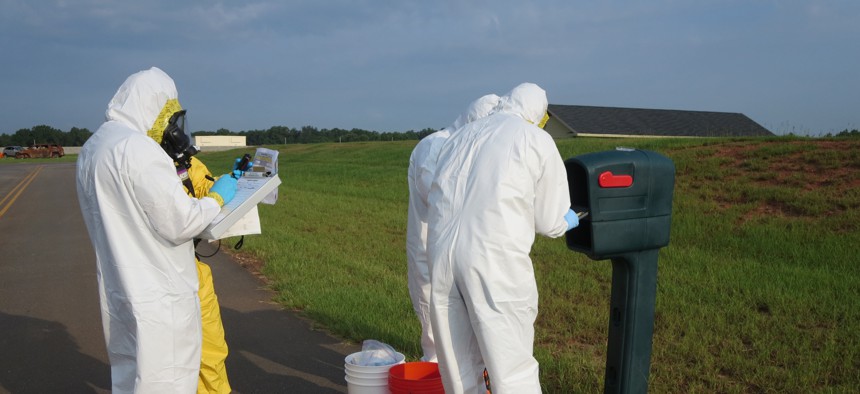NIST cooks up modified yeast for responder biothreat training

N. Lin/NIST
The yeast reference material has qualities similar to harmful biological agents, enabling first responders to practice detecting biothreats.
To train first responders’ to handle biothreats, researchers have developed a modified yeast strain that allows them to practice detecting dangerous substances such as bacterial or viral pathogens.
With the yeast surrogate developed by the National Institute of Standards and Technology, first responders can train for potential outbreaks without risking exposure of actual biohazards to themselves and the community, the agency said in an announcement.
Drills with real biothreat agents could also leave residual material on lab equipment, resulting in false positives during real response situations. NIST’s yeast, however, will not trigger a positive response in the biothreat detection assay, the agency said. The strain, called Saccharomyces cerevisiae NE095, is identified using nucleic acid detection technologies, so other yeast in the surrounding area will not affect results during training exercises.
NIST researchers worked with first responders and public health labs to test the substance’s impact. One study showed the yeast was still “viable and detectable” using field protocols and technologies when crushed into a powder for a training exercise. Another demonstration involved preparing the substance as a solution that was then applied to and dried on coupons. When swabbed, the yeast cells were successfully flagged by responders’ mobile labs as well as public health labs.
Yeast is a good surrogate because it “has a thick wall that is hard to crack open to abstract DNA,” NIST researcher Sandra Da Silva said, adding that it’s similar to actual biothreat agents such as anthrax that pose challenges to genetic material detection technologies.
The yeast imitation also helps verify the performance of microbial cell counting and nucleic acid detection technologies and workflows, NIST said. This could advance the study of microbes in medicine and in the body.
For training, “first responders could choose to take a biothreat agent and inactivate it, so it doesn’t grow or cause disease. But it could still be unsettling for the public when they hear that a training exercise in their local area is using anthrax or smallpox, even if you try to explain that it has been inactivated and you’re using it safely,” NIST researcher Nancy Lin said in a statement. “Using a nonharmful material such as baker’s yeast, which is used to make bread, can avoid this situation.”
NIST researchers also hope to create bacterial cell reference materials based on what they’ve learned from the yeast, the agency said.






